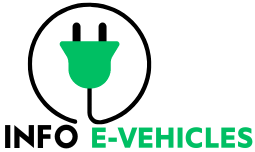In a recent announcement, Ford CEO Jim Farley articulated the company’s steadfast commitment to restoring production and deliveries to full capacity following the resolution of its contract negotiations with the United Auto Workers (UAW). Farley conveyed optimism about the affected plants in Michigan, Kentucky, and Illinois, asserting that they are “on track to reach full production schedules in the coming days.”


Challenges Posed by UAW Strike and Economic Conditions
The UAW strike, also impacting General Motors and Stellantis, aimed to secure wage increases and greater scheduling flexibility. This production halt posed a significant challenge for the three automakers, exacerbating ongoing economic uncertainties affecting companies globally.
Agreement Reached and Ford’s Workforce Reintegration
After reaching an agreement, Ford is actively working to bring back its more than 57,000 UAW-represented employees and aims to restore production levels, anticipating a successful 2024 akin to the company’s prosperous past years.
Farley’s Vision for 2024 – New Product Launches and Quality Commitment
Farley emphasized the significance of 2024 as a pivotal year for Ford, marked by an extensive lineup of new product launches in the U.S. He highlighted the introduction of models such as the new Ranger and Ranger Raptor, new F-150 and F-150 Raptor, new Expedition, new Explorer, new Lincoln Navigator, and new Lincoln Aviator. Farley underlined the critical importance of delivering these vehicles with top quality and on schedule for the company’s success in the upcoming year.
Addressing Challenges – Cost Reduction and Operational Efficiency
Acknowledging the challenges posed by the recent labor agreement, Farley stated that efforts would be directed towards reducing costs and eliminating operational inefficiencies. He acknowledged that the agreement had added significant costs, emphasizing the need for enhanced productivity and efficiency to enhance competitiveness.
Looking Ahead – 2023-2024 Strategy
Looking ahead to 2023 and 2024, Ford’s agenda includes addressing the aftermath of the UAW strike and ensuring a smooth production flow. The focus is on minimizing delays in launching new vehicles and regaining momentum as a business.
Conclusion
Ford, under the leadership of Jim Farley, is determined to overcome the setbacks caused by the UAW strike and propel the company towards a successful 2024. The emphasis on new product launches, coupled with a commitment to operational efficiency, reflects the company’s resilience in the face of challenges.
ALSO READ :-
LG Ventures into US EV Charging Market, Embraces Tesla’s NACS Standard
Tesla Cybertruck Delivery Event Invites Return through Referral Program
SOURCE : TESLARATI
FAQs
What were the main issues in the UAW strike?
The UAW strike aimed to secure wage increases and greater scheduling flexibility for its members.
How has Ford been impacted by the strike?
Ford, along with General Motors and Stellantis, experienced a production halt at plants in Michigan, Kentucky, and Illinois.
What is Ford’s strategy for recovering from the strike?
Ford CEO Jim Farley outlined plans to bring production and deliveries back to full capacity, focusing on operational efficiency and cost reduction.
What new vehicles can we expect from Ford in 2024?
Ford plans to launch a range of new vehicles in 2024, including the new Ranger, Ranger Raptor, F-150, F-150 Raptor, Expedition, Explorer, Lincoln Navigator, and Lincoln Aviator.
What were the primary issues leading to the UAW strike, and how did it impact the automotive industry?
The UAW strike focused on securing wage increases and greater scheduling flexibility. Its impact extended beyond the company involved, affecting multiple players in the automotive industry, including production halts at key plants.
How does the recent labor agreement impact the company’s financial outlook, and what measures are being taken to address added costs?
The labor agreement has added significant costs, prompting a strategic focus on cost reduction and operational efficiency. The company aims to counterbalance the financial impact through these measures.
